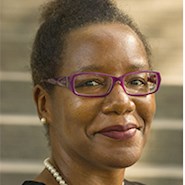
By Margaret M. Mitchell
As Civil Engineering magazine celebrates its 95th birthday on October 1, we find ourselves thinking about the past and the future — how far the profession has come since 1930 and how far it can grow.
Yet more growth is on the horizon. In 2006, ASCE announced its Vision 2025 with the goal of establishing civil engineers as trusted leaders in the modern world: master builders, stewards of the environment, innovators and integrators, managers of risk, and leaders in public policy. The aim was to ensure that civil engineers are viewed by citizens, public policymakers, and clients as responsible, reliable visionaries who can be trusted to create a sustainable world that enhances everyone’s quality of life — now and in the future.
Although the project was tagged to this year, it was always meant to be an ongoing effort — aspirational and evolving. As explained in the feature article “Vision 2025 and Beyond,” progress has been made in several areas, such as environmental stewardship and innovative thinking. Some assumptions made a decade ago have changed: nanomaterials, for example, are having less of an impact than artificial intelligence. Other goals, such as having more civil engineers take on public leadership roles, remain.
Indeed, there was much that could not be anticipated in 2006, such as the rise in demand for electricity. For example, “Long-Distance Delivery,” details a massive wind-energy transmission project crossing two states and more than 550 miles in the American Southwest that may have been inconceivable 20 years ago. “The U.S. must think big and construct numerous generation facilities and thousands of miles of high-voltage transmission lines” to meet exploding demand, the authors write.
And as the authors of “Repairing Active Substations” make clear, increasing demand means engineers continue to be needed to assess existing substations and make repairs to foundations and structures without taking systems out of service. Two case studies show how it can be done.
For those electrical distribution systems that fall within flood zones, scour can wreak havoc. “Anticipating the Worst” offers an instructive example of how to combat future washouts. And “The Right Foundation in the Right Place” demonstrates several new ways engineers are incorporating steel foundations, rather than the usual concrete, into new and expanding transmission system designs, saving time without sacrificing stability.
Another technology still nascent a decade ago, the digital twin, is now critical to helping engineers evaluate and plan upgrades and repairs to electrical infrastructure. As the author of “Infrastructure in 3D” explains, 3D photogrammetry provides highly accurate, high-resolution images to create precise twins that will make inspections and assessments less disruptive, safer, and more accurate.
Civil engineers of all stripes will increasingly rely on all these new methods as well as their own ingenuity to fulfill the goals of Vision 2025 to become more environmentally responsible, forward-thinking, and innovative.
Margaret M. Mitchell is the editor in chief of Civil Engineering.
This article first appeared in the September/October 2025 issue of Civil Engineering as “Power to the Engineers.”



